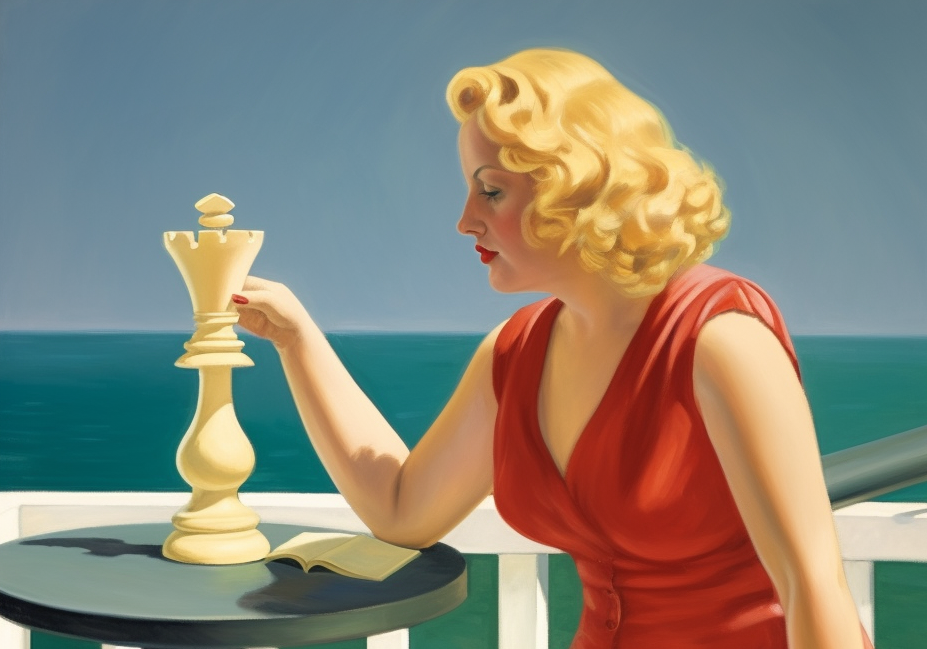


ChessBase 17 - Mega package - Edition 2024
It is the program of choice for anyone who loves the game and wants to know more about it. Start your personal success story with ChessBase and enjoy the game even more.
Chess Art currently comprises 14 series, each with six cards, which we introduce here with one card per style. You can earn those digital collectible cards by playing against Fritz19. During play you earn trophies ("Opponent has unsafe king"), and trophies are rewarded with collectible cards. There is a market where you can offer, buy, or exchange your cards for ducats. Visit cards.chessbase.com to learn more.
.png)
Series American Realism: The Bishop Card
Renaissance painting flourished between the 14th and 16th centuries in Europe. It was characterized by a renewed interest in classical antiquity, a focus on perspective and human anatomy. This period saw the emergence of techniques like central perspective and chiaroscuro, which served to enhance spatiality and realism in artworks. Artists such as Leonardo da Vinci, Michelangelo, and Raphael were leading Renaissance painters and created famous works known for their attention to detail and innovative depiction of light and shadow.
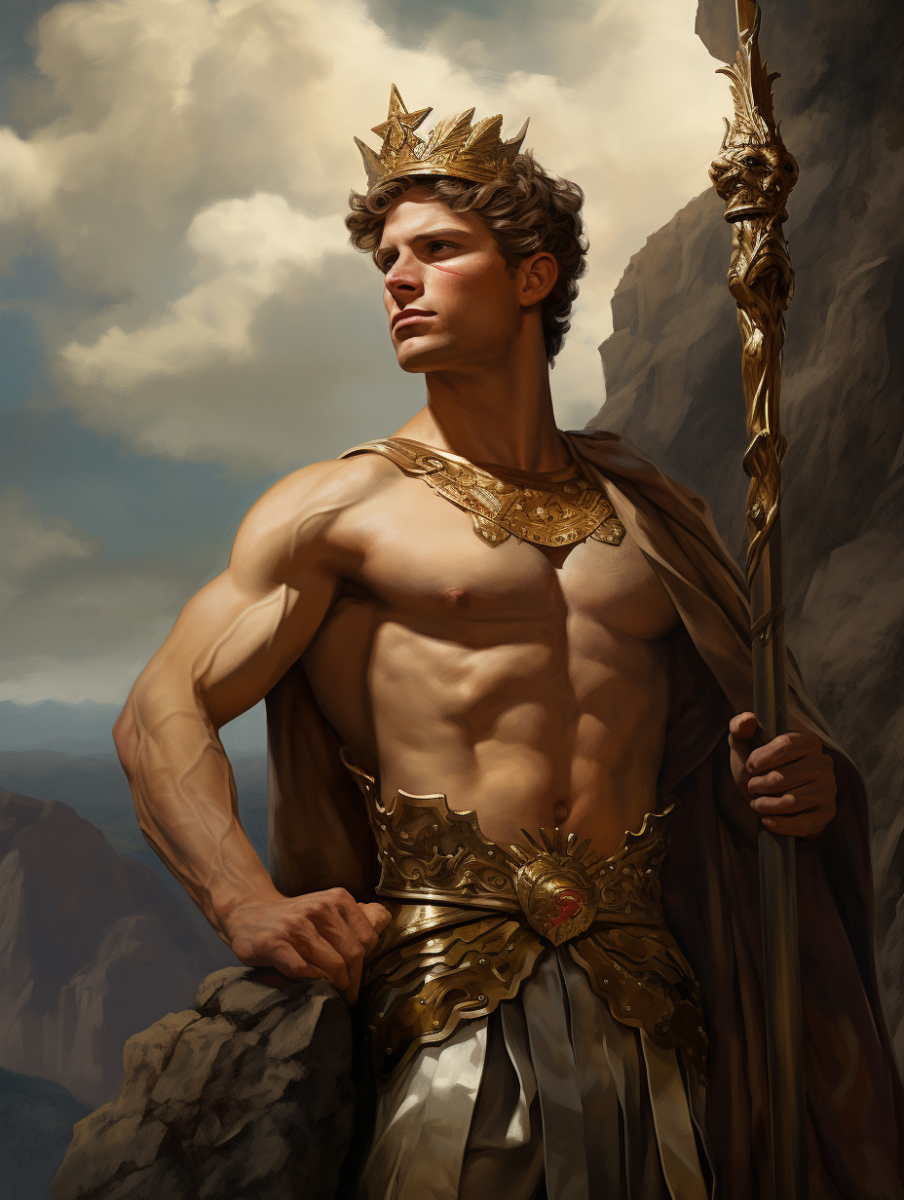
Card "King" of the Renaissance Series: Michelangelo and Anatomy
The Baroque era, which spanned from the late 16th to the early 18th century, is characterized in painting by dramatic intensity, strong contrasts of light and shadow, and deep spatial illusions. Famous painters include Caravaggio, Rubens and Rembrandt, famous for vivid representations and psychologically penetrating portraits, respectively. Baroque painting reflects an endeavor to emotionally move the viewer and had a lasting influence on the development of later art periods.

Cover Page of the Baroque Series: Spatial Depth in a Still Life according to Rembrandt
Romanticism emerged in the late 18th and early 19th century. It emphasizes emotional depth, individual fantasy, and admiration of nature. Characteristic are dramatic, often melancholic scenes that highlight the sublime and mysterious, often associated with a longing for the unattainable or the past. Romantic artists like Caspar David Friedrich, William Turner and Eugène Delacroix were distinguished by their innovative use of light, color, and composition to enhance mood and symbolism. The era of Romanticism laid the groundwork for the later development of modern art.
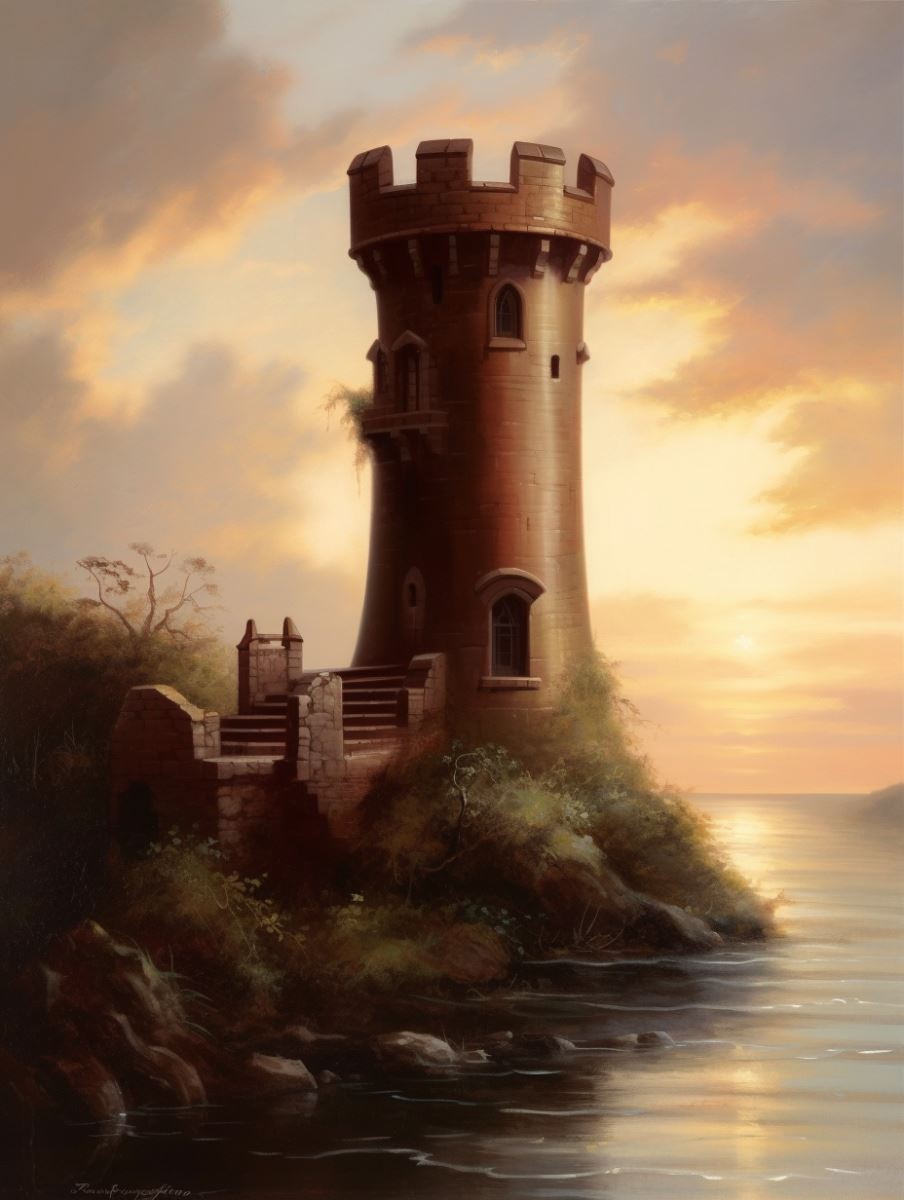
Romantic Series - Mysterious Tower inspired by William Turner
Impressionism was an art movement that originated in the 1870s in France, characterized by a loose, vivid painting style and an emphasis on light and its changing qualities. Artists, including Claude Monet, Pierre-Auguste Renoir, and Edgar Degas, aimed to capture the fleeting impression of a scene, rather than delivering detailed, realistic representations. Impressionistic works often feature visible brushstrokes, open composition, and unusual viewpoints. This movement, in its departure from realism, marked a fundamental shift in the art world.
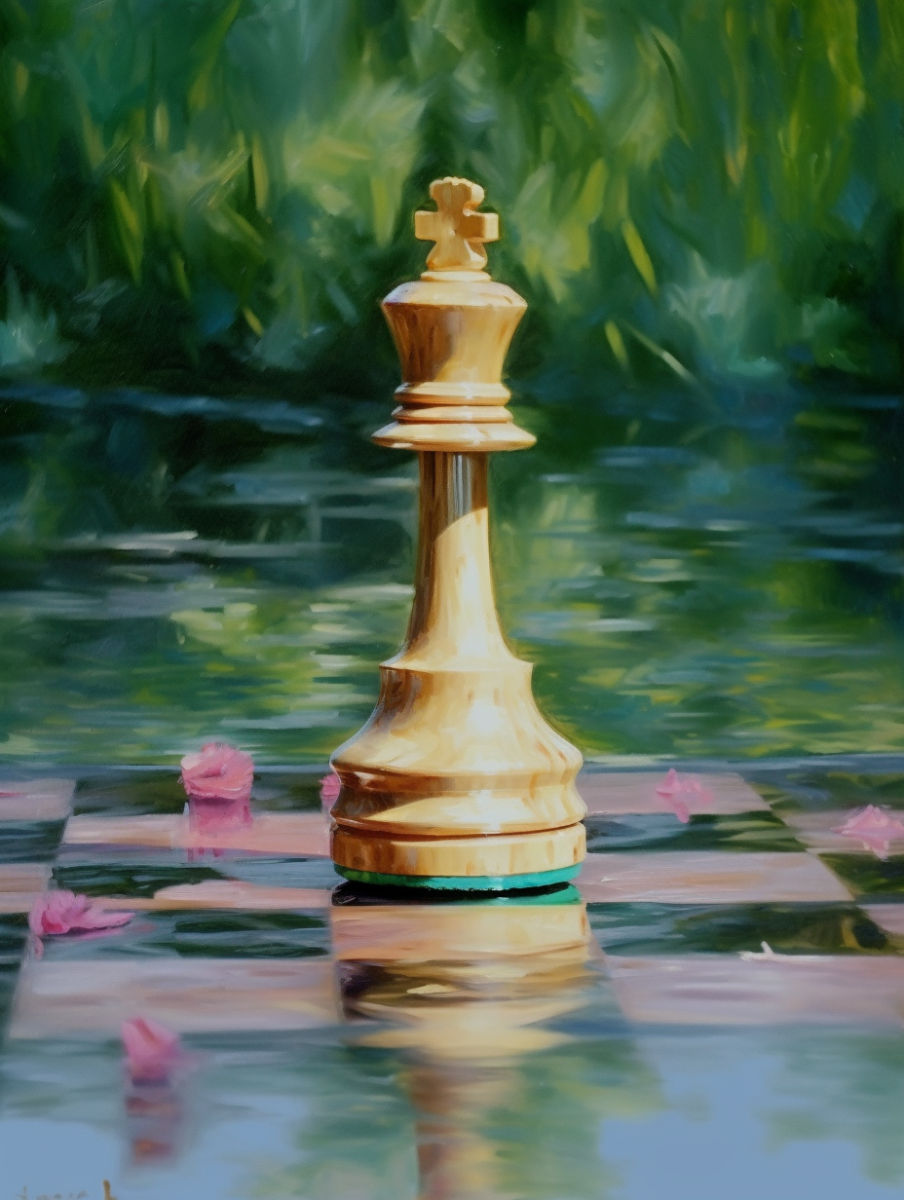
King on a Lily Pond like Claude Monet
Expressionism, which emerged around 1900 in Germany and Austria, was an avant-garde movement in art characterized by the depiction of intense, subjective emotions and the distortion of forms to create an emotional effect. Artists like Edvard Munch, Ernst Ludwig Kirchner, and Auguste Macke in the Rhineland used vivid colors, rough brushstrokes, and distorted perspectives to express inner feelings and psychological states. This movement was a reaction to industrialization and the associated social changes, as well as to the fears and uncertainties of the modern world. Expressionism influenced numerous other art movements and was an important precursor to the abstract art of the 20th century.

A Contemplative Queen by August Macke
Cubism is an avant-garde style initiated in the early 20th century by Pablo Picasso and Georges Braques. Cubism is characterized by the decomposition of objects into geometric shapes and the depiction of these objects from multiple viewpoints simultaneously, leading to fragmented and abstracted image compositions. Cubism rejected traditional perspectives and the imitation of nature, making it a precursor to the development of modern art and later abstract movements.

Powerful Queen after Picasso in the Cubism Series
Dadaism was an art movement that emerged during World War I as a reaction to the horrors of the war and the rigid cultural norms perceived at the time. Characteristic of Dadaism is its anti-conventional stance, which manifested in a rejection of traditional art forms and the creation of works with absurd, satirical, and often random elements. Dadaism, more an anti-art movement than a coherent stylistic direction, laid the groundwork for later avant-garde movements, particularly Surrealism. The German Dadaist Max Ernst, who had a keen interest in chess, designed a set of chess pieces that continue to be widely reproduced today.
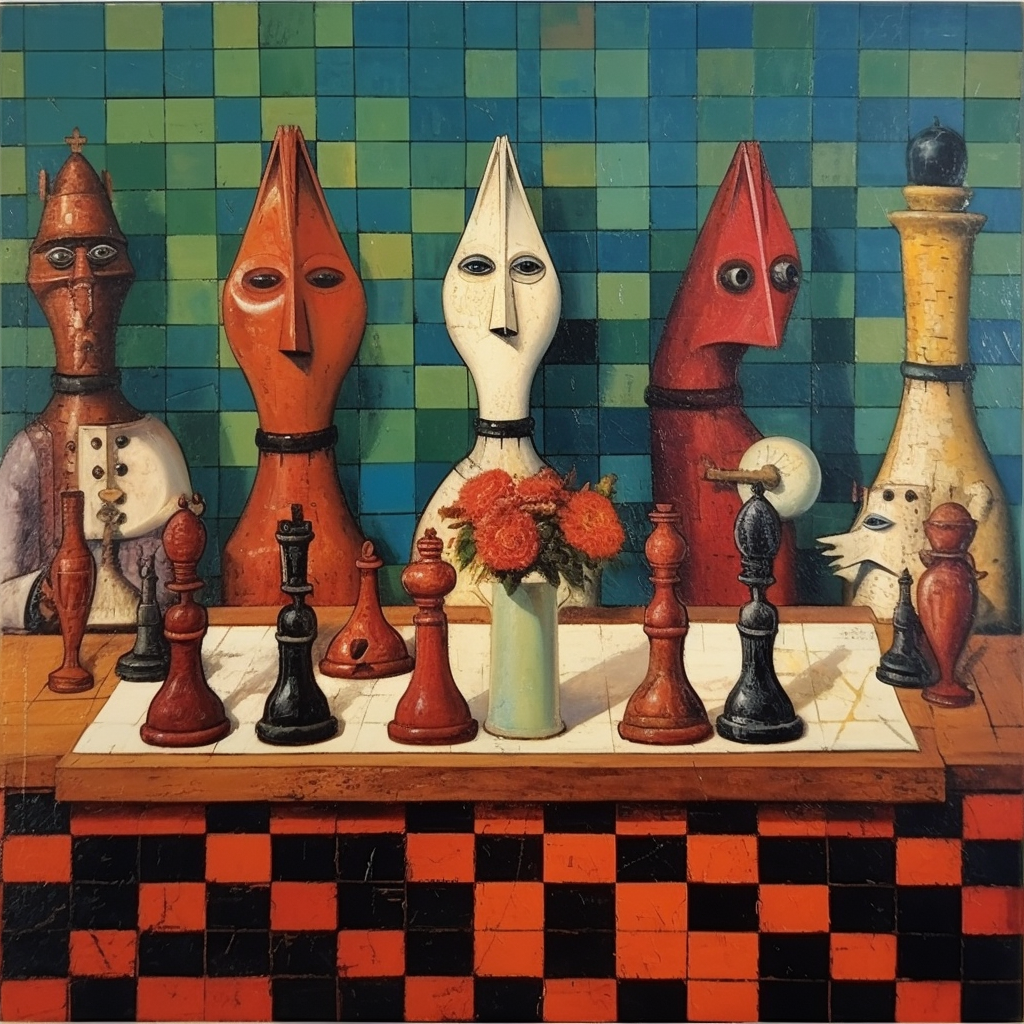
Cover Page of the Dadaism Series: Still Life with Satirical-Anthropomorphic Figures (Max Ernst)
Surrealism originated in the 1920s in Paris, with the goal of unleashing the creative power of the subconscious. Characteristic of Surrealism are dreamlike scenarios, bizarre, often irrational images, and a fusion of reality and fantasy. Influenced by Sigmund Freud's psychoanalysis, this movement aimed to explore and bring forth the hidden aspects of the human mind through artistic expressions.

Nightmarish Creature in the Surrealism Series: The Knight
Art Nouveau, also known as "Jugendstil", was an art and design-oriented movement that developed at the end of the 19th century and lasted until the early 1910s. This style was characterized by flowing lines, organic forms, and intense inspiration from nature, manifested in curving plant motifs as well as wavy, asymmetrical lines. Art Nouveau aimed to integrate art and design into everyday life and influenced a variety of areas, including architecture, furniture design, glass art, and graphic design.
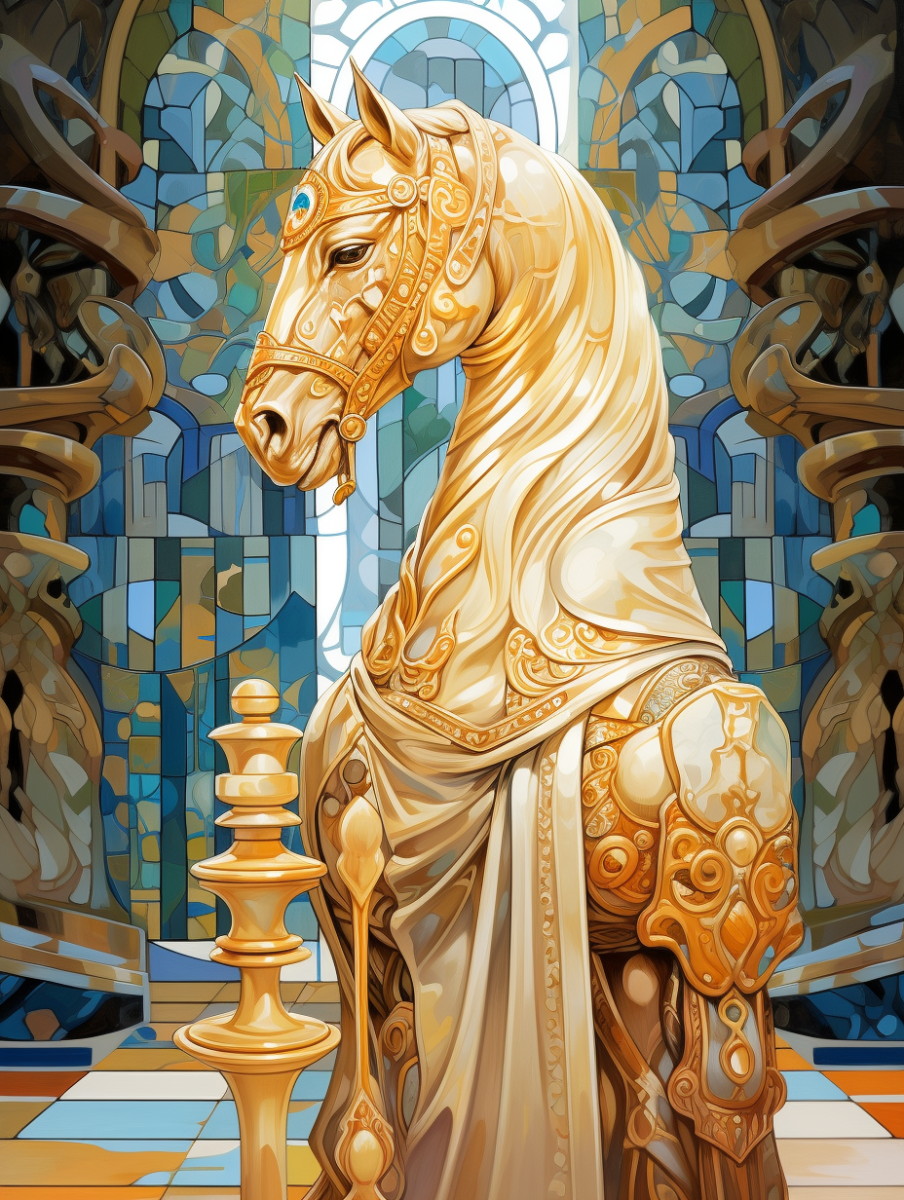
Art Nouveau Series: Knight inspired by Louis C Tiffany (you might know his lamps)
Socialist Realism was state-sponsored art that predominated in the Soviet Union from the 1930s and was present in various communist countries until the end of the Cold War. This style emphasized realistic depictions of everyday life, with a focus on glorifying communist ideals, work, collectivism, and the achievements of the Soviet Union. Socialist Realism primarily served as a propaganda tool and was characterized by idealized, often heroic images of socialist life, intended to educate and motivate the population in line with state ideology.
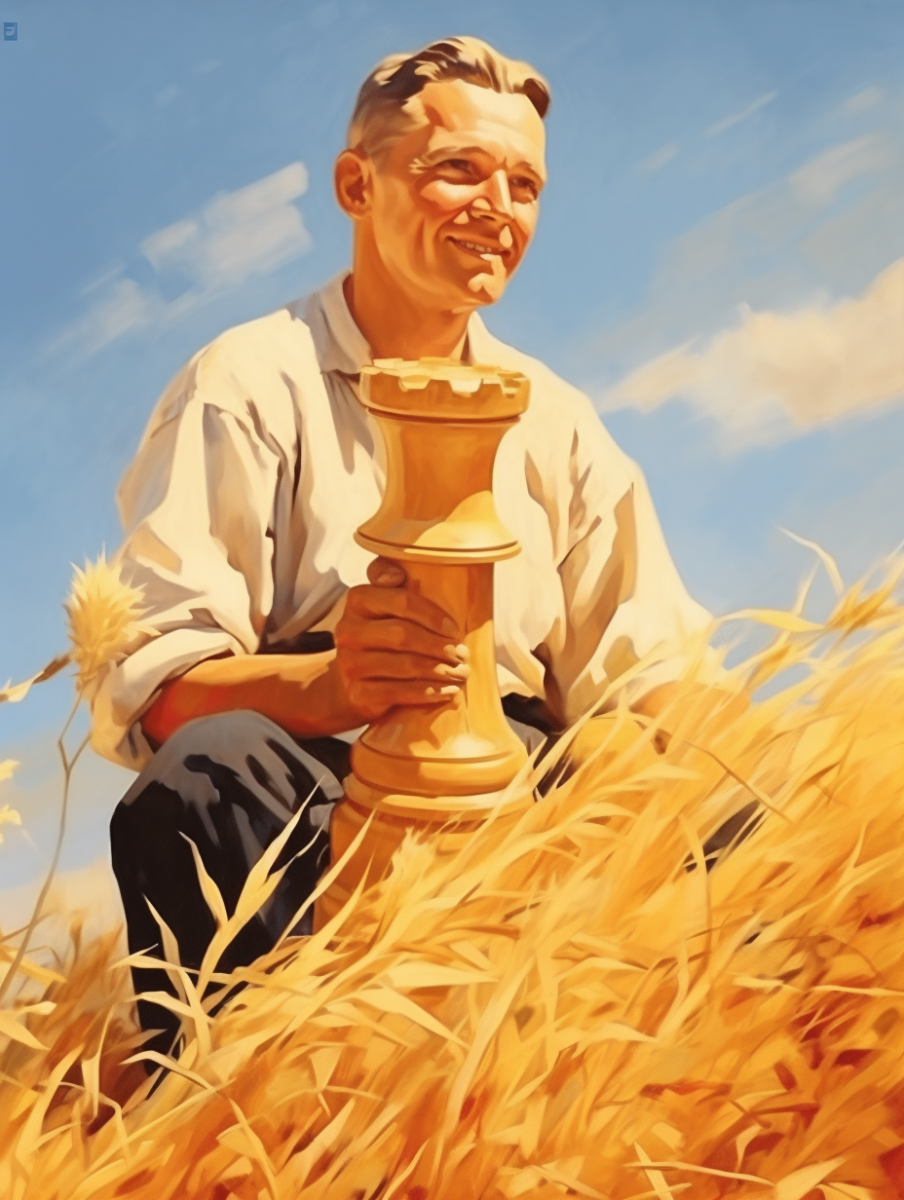
Hero of the Harvest: The Rook Card
American Realism was an art movement that emerged in the United States at the end of the 19th and beginning of the 20th century as a reaction to the prevailing Romanticism. This movement aimed for an unvarnished depiction of everyday life and society, with artists like Hopper, Eakins, and Homer painting typical American scenes and landscapes with a focus on realistic details and character portrayals. American Realism often reflected the social themes and challenges of its time.
Our series is inspired by Edward Hopper, known for his realistic portrayals of loneliness, melancholy, and the alienated mood in urban America of the 20th century. His works, like the famous "Nighthawks," are characterized by their sparing use of figures, the emphasis on light and shadow, and an atmospheric quality that creates a deep emotional resonance.
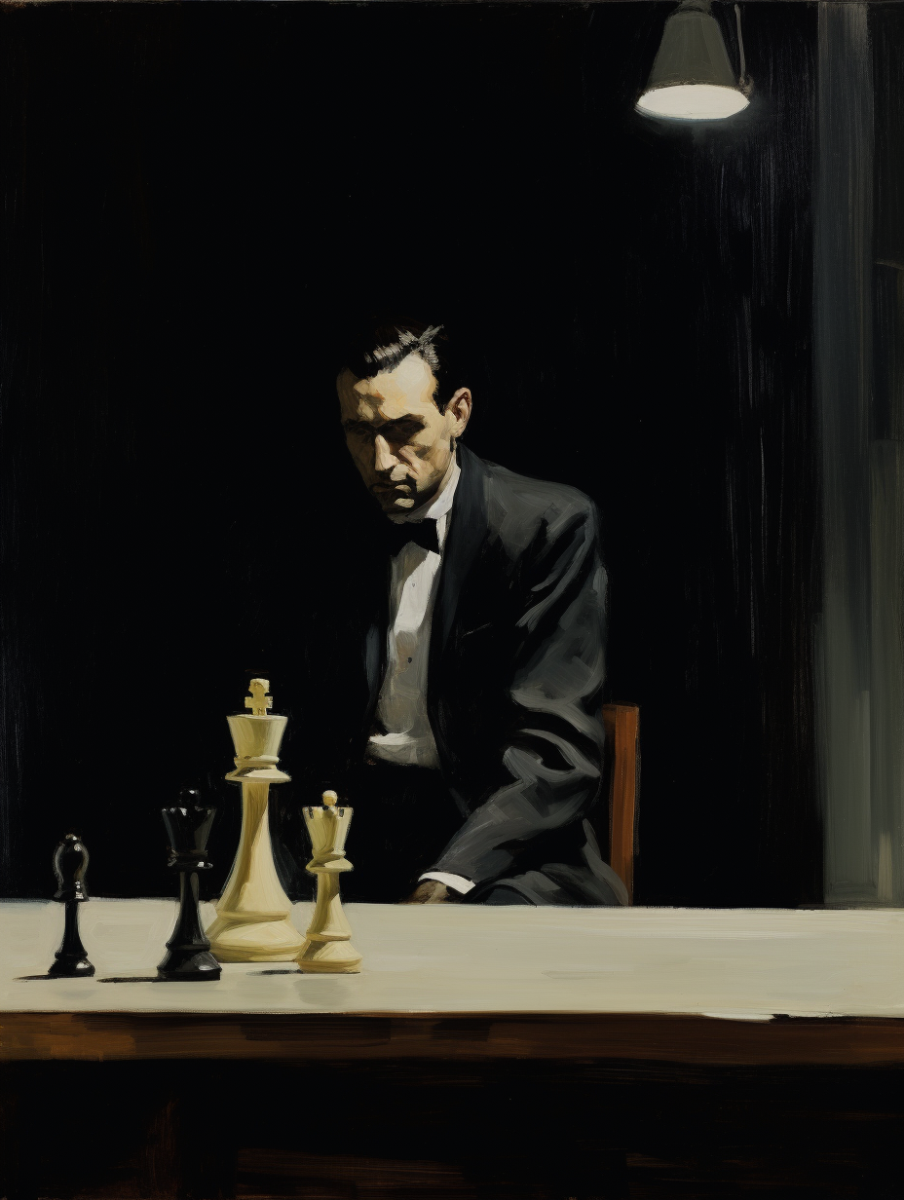
Light and Shadow ('Chiaroscuro') in the King Card
Disney as an art genre represents a unique blend of visual art, storytelling, and innovative technology, characterized by distinctive animations, vibrant color palettes, and unmistakable character designs. This style has shaped visual storytelling in the entertainment industry by combining complex emotional narratives with an aesthetic accessible to all age groups. Disney's genre has manifested not only in films and television shows but also in a wide range of media, including theme parks and merchandise, which have influenced the cultural landscape worldwide.

Der Läufer in der Disneyserie
Pin-up art, which reached its peak in the 1940s and 1950s, is known for its stylized depictions of idealized women. Originally spread in magazines, calendars, and posters, pin-ups became particularly popular during World War II, when they were revered by American soldiers as symbols of home and female beauty. This art form, which made artists like Alberto Vargas and Gil Elvgren famous, played a significant role in the development of modern female iconography and had a lasting influence on fashion, advertising, and pop culture.
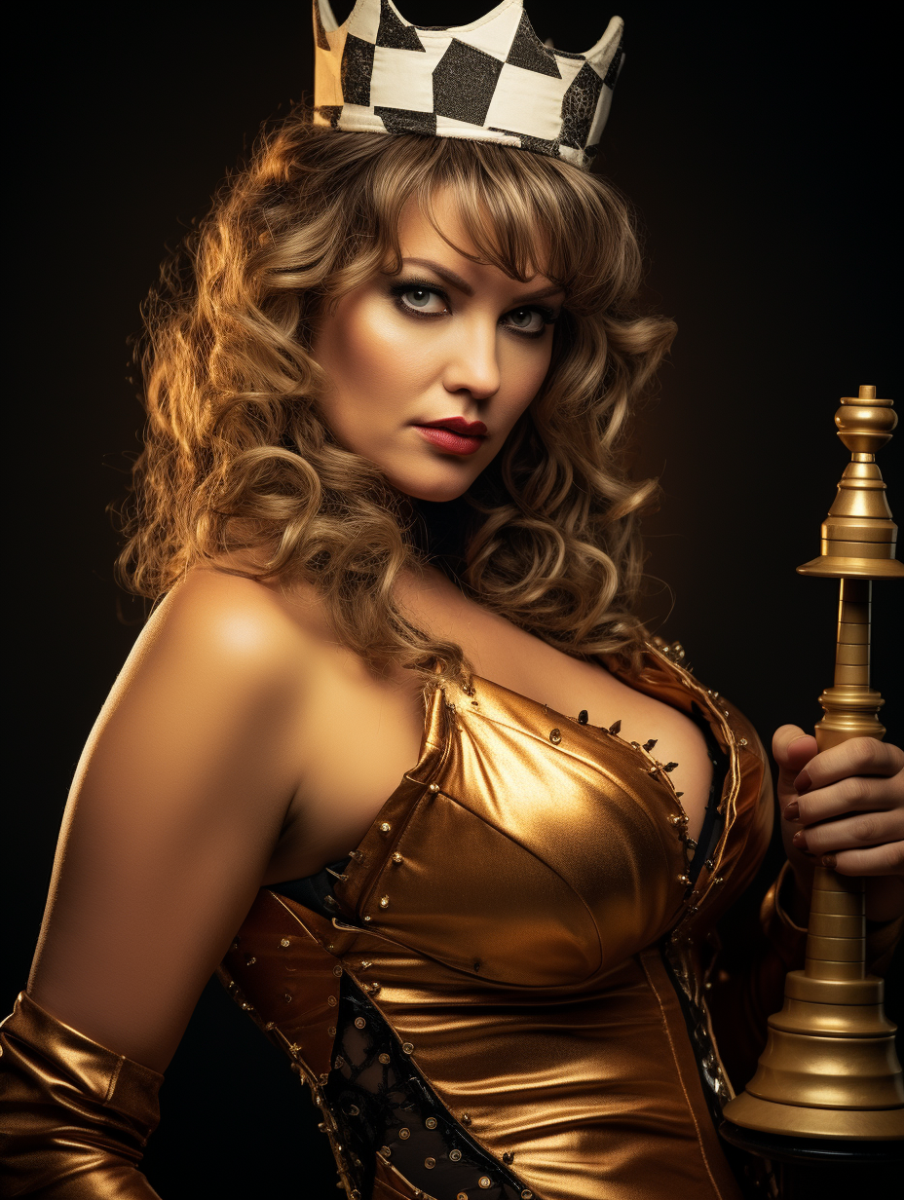
Female Self-Confidence and the Power of the Queen in Chess
Abstract art is an art movement that developed in the early 20th century, characterized by a departure from the traditional representation of real objects. In abstract art, the focus is on the use of colors, shapes, lines, and textures to convey emotions, concepts, or purely visual aesthetics, independent of the real world. This movement, represented by artists such as Piet Mondrian and Jackson Pollock, emphasizes the importance of individual expression and subjective interpretation, making it a fundamental component of contemporary art.
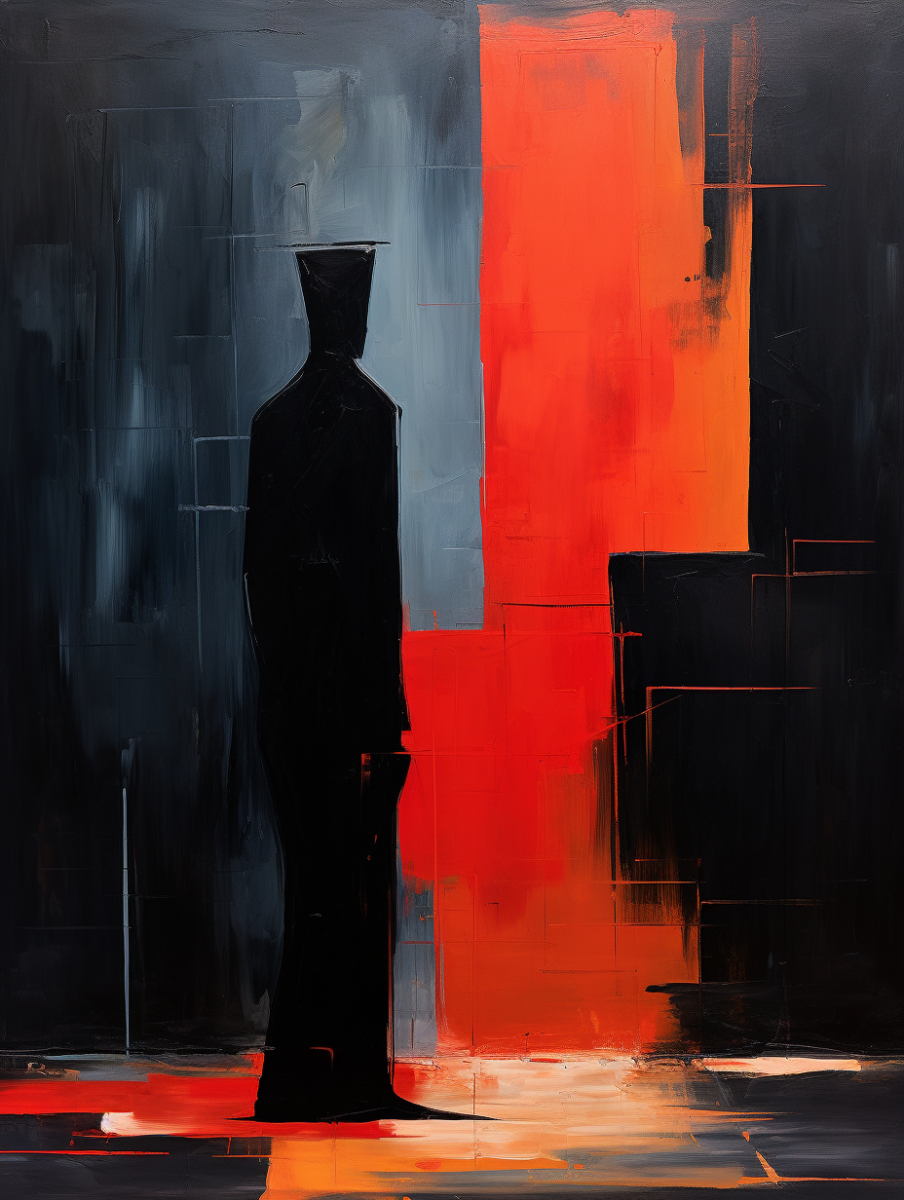
Visual Tension Between Black and Red: The Abstract King
The Chess Art series on cards.chessbase.com appear as follows: Each series contains six cards: King, Queen, Rook, Bishop, Knight, and Pawn.
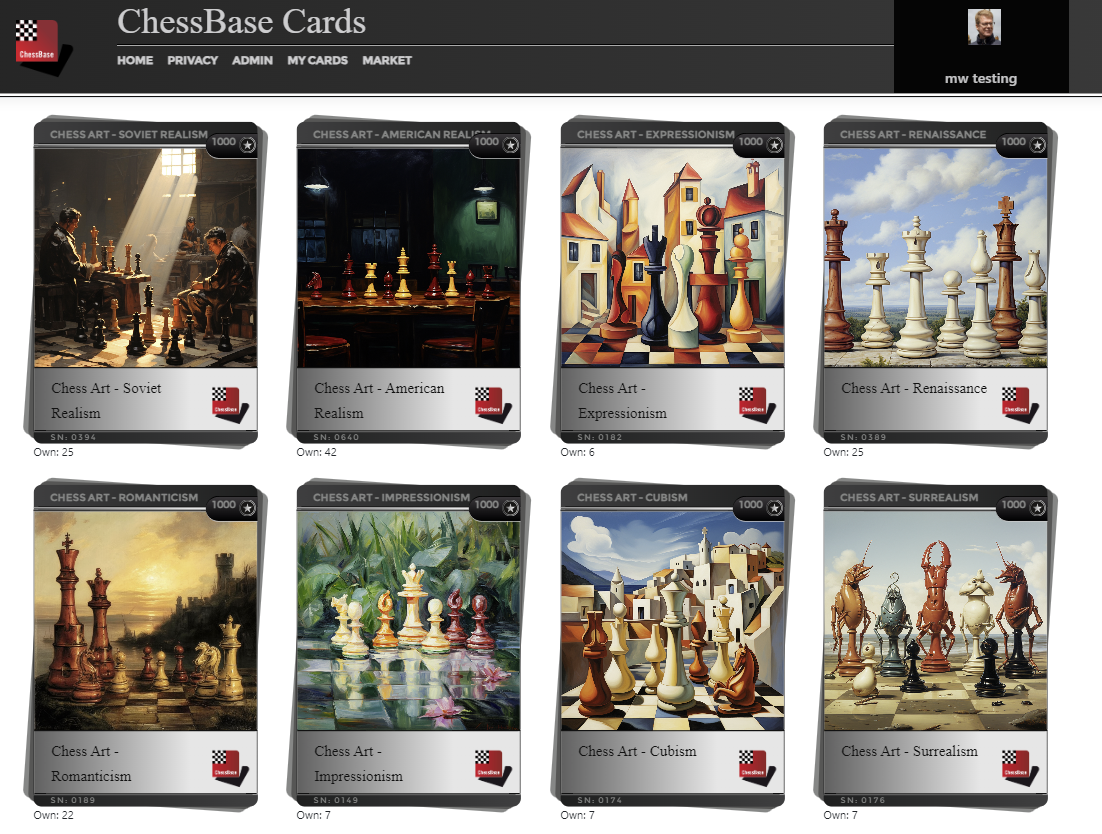
Eight of Fourteen Series
As mentioned, you can obtain collectible cards either by playing diligently against Fritz or by visiting the market, where other players offer them for ducats or for trade. Have fun collecting!